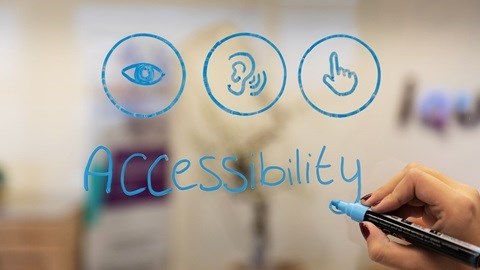Have you thought about your Digital Accessibility?

Accessibility
Accessibility ensures that websites and applications are easily accessible to every user, including users with a disorder.
The disorders that influence the design and development of digital solutions relate to three senses: vision, hearing and touch. The cognitive ability to process these senses can also be influenced by a disorder.
For this reason, these senses must be taken into account when creating a design (where possible and when applicable of course). These senses ensure that an interaction with the digital solution can take place. A disorder can therefore negatively affect the use of an application or website.

Prevent exclusion
Did you know, that as many as 8% of men and 0.5% of women are color-blind? If you have not taken this into account, you potentially exclude a large group of users. For example, by applying color contrast and visual aids, such as icons, you can ensure that this exclusion does not take place for these users.

To give an example, the illustration of input fields is given above. On the left, the color differences are clear to people without visual impairments. On the right is how someone with deuteranopia, a form of color blindness, sees the input fields. The cross icon also makes it clear to someone with deuteranopia that the e-mail address has not been filled in correctly.
UX solutions for Accessibility
Our UX team always takes accessibility into account when designing digital solutions. Not only color contrast is taken into account, this is just one of many examples.
Typography is also an important aspect. You can think of font size, clarity, spacing, truncation and alignment of texts to make content readable for users with dyslexia for example.

Also, an animation is sometimes used when creating a design to provoke an interaction. This way you can have a button light up or flash, so that it is clicked on. However, do you realize that if this button flashes too often it can cause an epileptic seizure? Or that this animation can distract users with a concentration disorder?
There are many more barriers that can deteriorate the use of an application or website. UX is therefore of great importance to ensure accessibility for every user and to provide a user-friendly digital solution.
Have you already thought about Accessibility?
The W3C Consortium lays down the most important guidelines for accessible websites in their Web Content Accessibility Guidelines (WCAG 2.1). These guidelines can be found on their website.
Do you want to know whether your application or website meets the conditions of accessibility or do you want to improve your accessibility? Our UX specialists will gladly help you with this!


